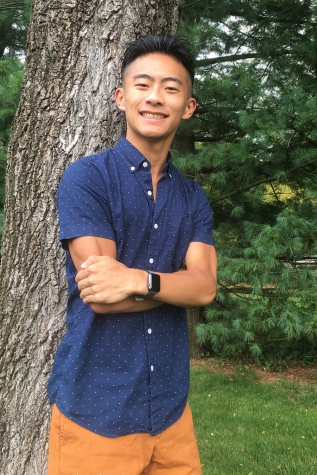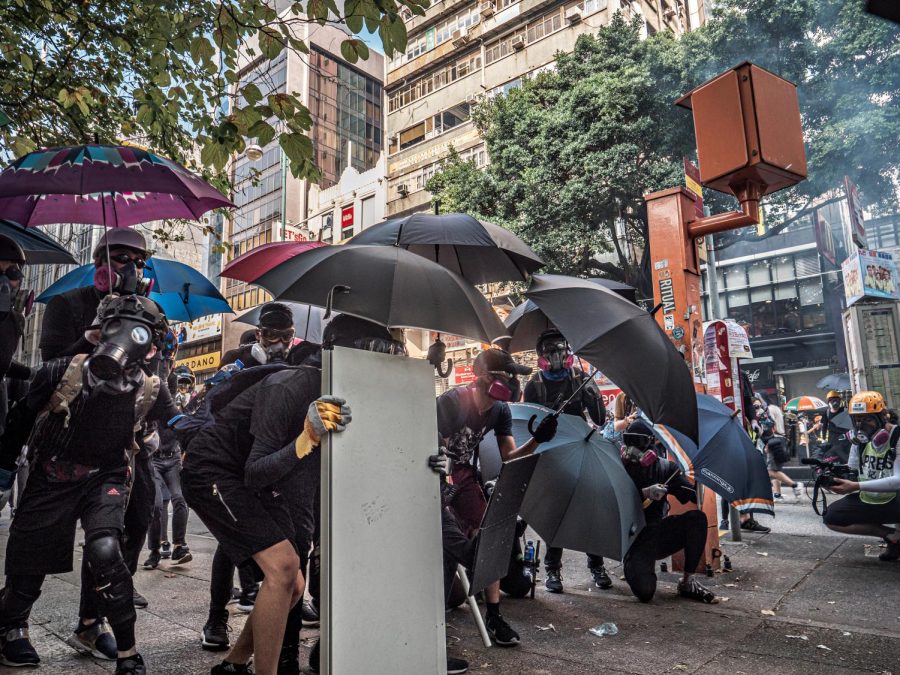Hong Kong Rising: Fighting for a City’s Future
Tensions between protestors and the government have mounted as violence between police and protestors becomes more commonplace.
While students at Southern Lehigh and across the United States marked the end of August by returning to school, classrooms throughout Hong Kong remained empty. High school students in Hong Kong marked the beginning of the new academic year by boycotting classes and joining ongoing protests against the Chinese government which have rocked the territory for over six months.
The protests began last March as a response to a bill proposed by Hong Kong’s government that would have given the mainland Chinese government greater control over the legal system. They have gradually evolved into a battle for Hong Kong’s future, plagued by increasing fears of violent suppression by the Chinese government, as violent confrontations between the police and protesters intensify, and the Chinese military amasses outside of Hong Kong.
Though primarily encompassing young adults, the protests have grown to unite all classes and creeds within the Chinese territory. High school students in Hong Kong have become one of the most recent groups within Hong Kong’s population to have joined the protests en mass.
“I think it’s really important because it’s showing the government that they believe in their cause so much that they’re willing to sacrifice their education to show much they oppose bill and how much they want change,” sophomore Ale Huaman said.
In recent years, the Chinese government has steadily limited the freedoms which Hong Kong has enjoyed since the region was returned to China by the United Kingdom in 1997. These attempts have consistently resulted in opposition from the people of Hong Kong in the form of protest against China and Hong Kong’s government. The most recent major demonstration happened in 2014 during the so called “Umbrella Revolution,” organized in response to plans by the Chinese government to limit the independence of Hong Kong’s elections.
The demonstrators in these series of protests have given five key demands to Hong Kong’s government and by extension the mainland government in Beijing. The demands are: that the bill which initiated the protests be repealed, that the government no longer classify the protests as riots, the release and exoneration of protestors who have been arrested, investigation into brutality by Hong Kong’s police, and free elections in Hong Kong along with the resignation of the Chief Executive of Hong Kong, Carrie Lam.
Despite the unity of the public, the demonstrations have been not free from danger. Physical confrontations between protestors and the police have already ended in violence, with high school students participating in the protests having been shot by police on two separate occasions. Increasing fears of a violent crackdown by the Chinese government, coupled with increased fervor among protestors has led to appeals for aid from the United States among other countries.
“From everything I’ve read and listened to, most analysts feel it could go either way [whether the protests would violently],” civics and government teacher Dr. Katie Quartuch said. “They feel like the Chinese government is unpredictable.”
However, as of now, the United States has offered no more than condemnation of violence and hopes for a peaceful resolution to the situation.
“If anything we ever interfered in, this would probably be the most important,” junior Michael Nagy said. “The protestors are fighting for the right to self-determination, and I feel as a United States citizen, there is nothing that represent our interests better.”
History has shown that the Chinese government’s response to unrest and dissent has varied widely, and it is difficult to determine how the current situation in Hong Kong will end. However, as long as the will to fight remains within Hong Kong, and as long as the protestors are willing to stand against the government, the battle for Hong Kong will continue.

Senior Lucas Zhang is a second-year staff reporter and Our World editor for the Spotlight. He is also President of Student Council, a member of the Speech...


